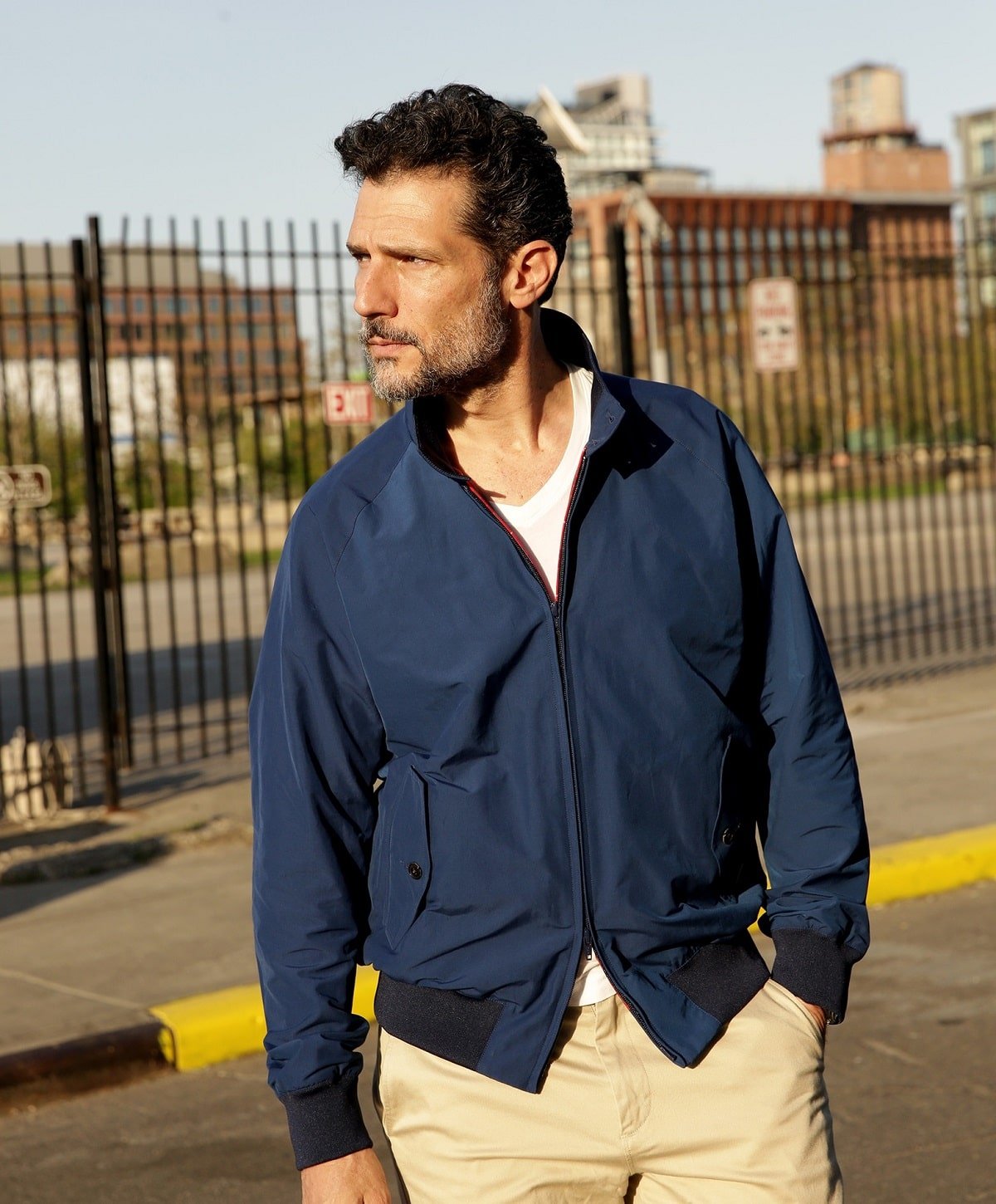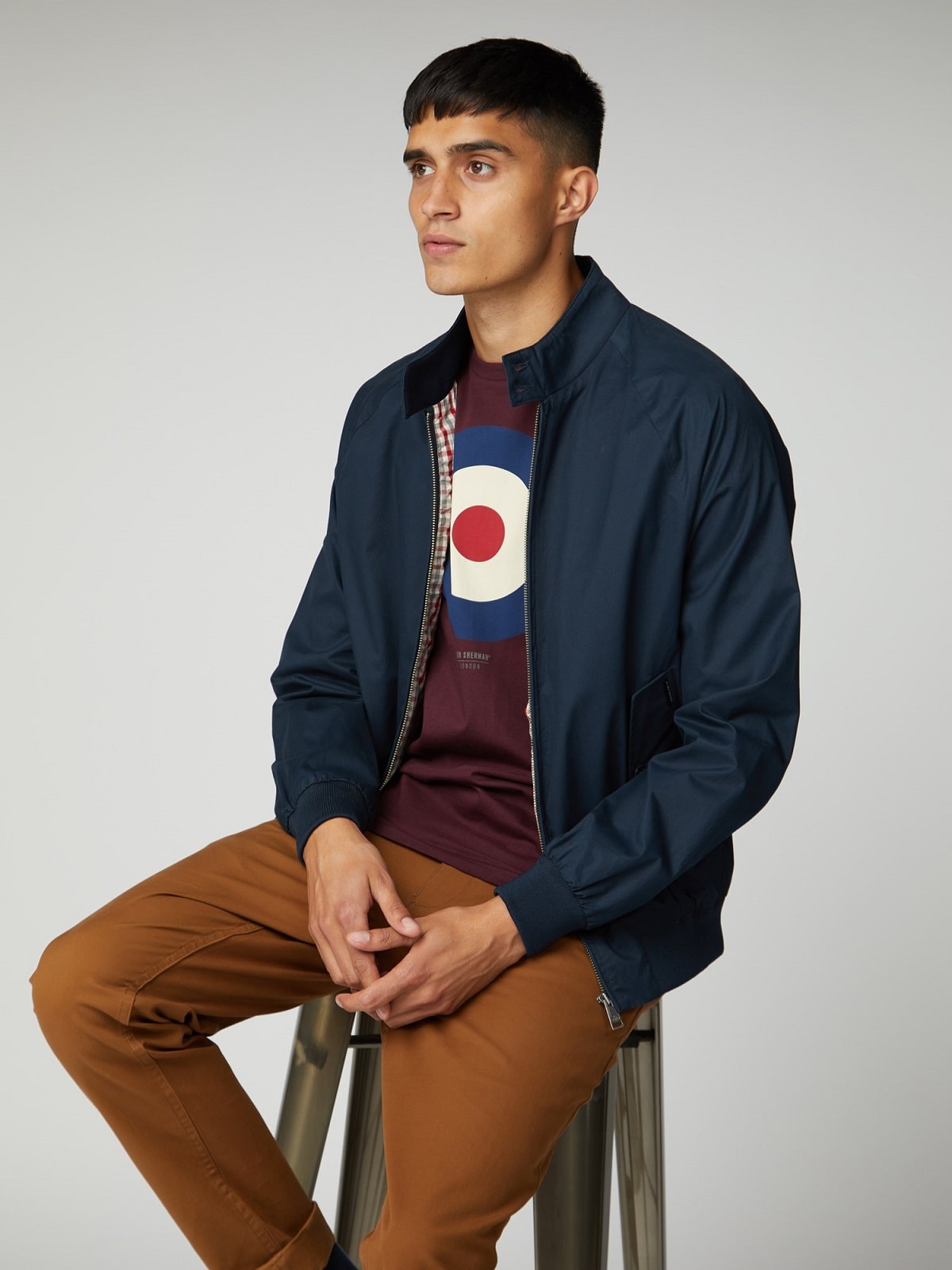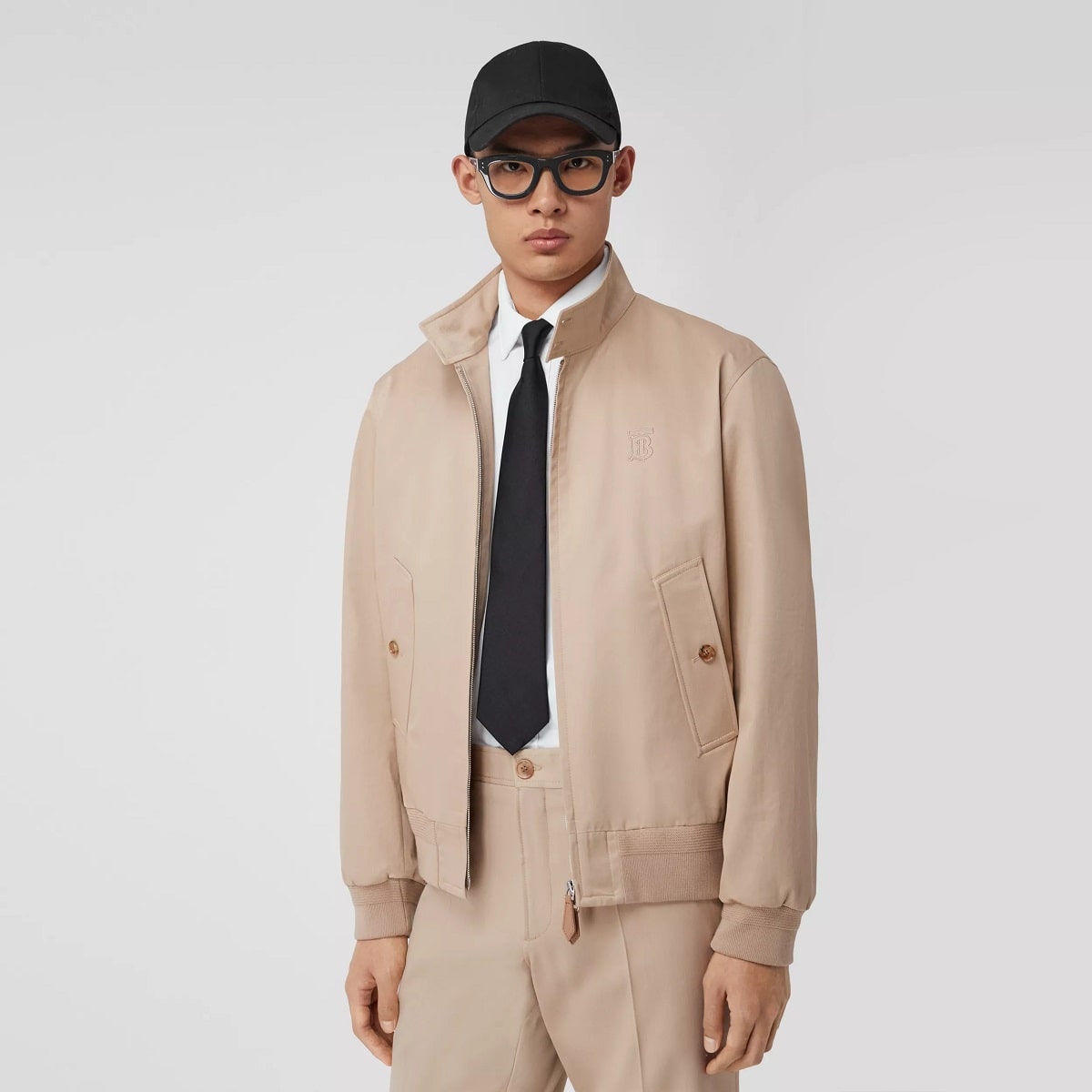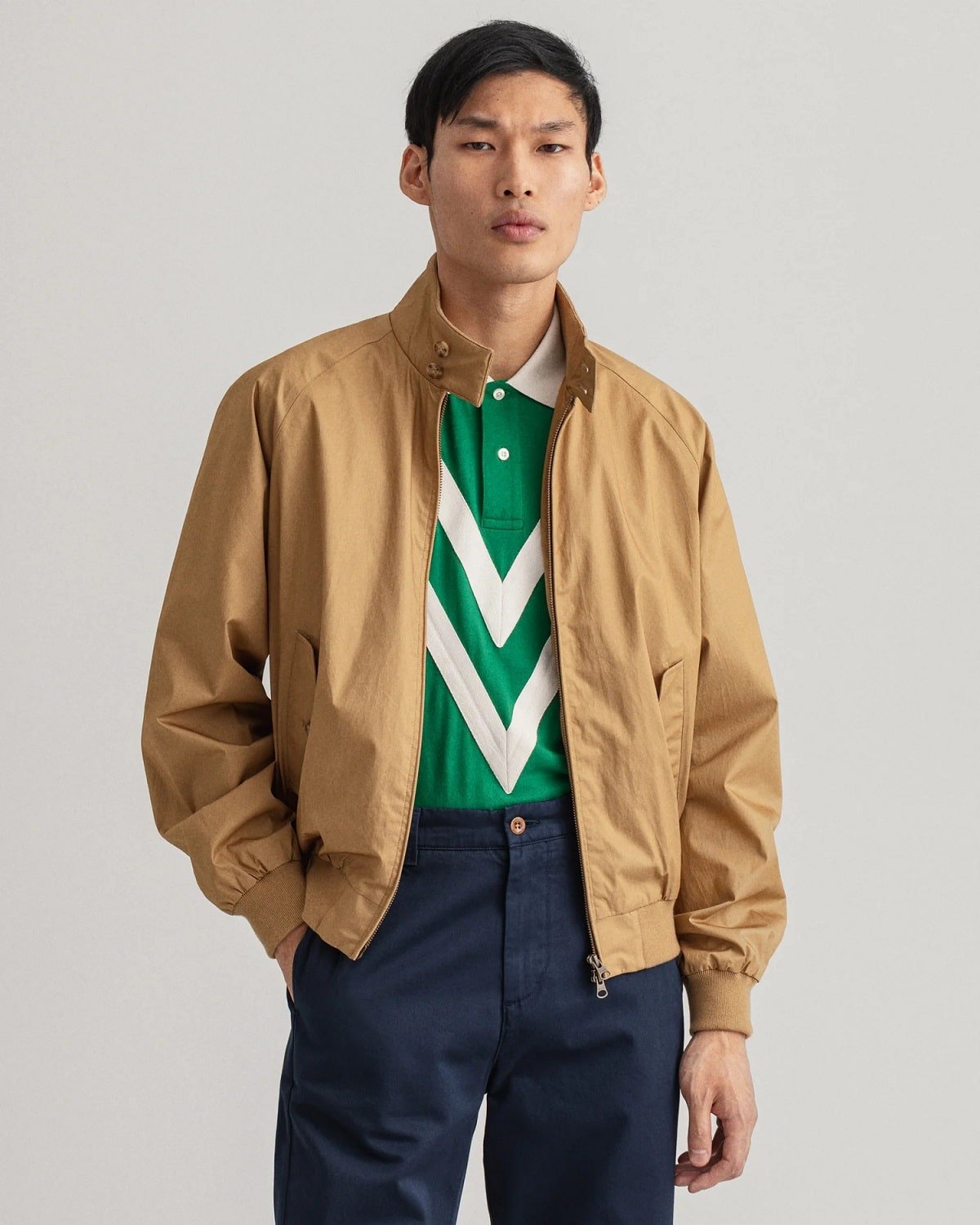1
HOME > Tips & Advice >
WHAT IS A BLOUSON JACKET?
ALSO CALLED HARRINGTON JACKETS WHICH STEM FROM MILITARY ORIGINS
Written by Ivan Yaskey in Tips & Advice on the 5th October 2022

About two years ago, it was decided that bomber jackets had made a return. The question, especially for those cultivating a more classic style of dressing, is, “Did they ever leave?” The answer is, the leather and wool solid-colour silhouettes became so commonplace that we simply stopped noticing them as much. In turn, the revival is less of an introduction and more of an invigoration: Variety has shaken up the mundane. So, predictably, we see more colours, materials, and patterns. Stemming from here, shapes and construction go classic – whether that’s nylon for civilian use or a heavier, lined flight jacket style – and they simultaneously explore related adjacent terrain, like colour-blocked varsity jackets straight out of an American high school. Blouson jackets – also called Harrington jackets – have this tangential relationship. They cast a similar profile and stem from military origins, but notable differences like a collar and lighter material set them apart. As well, the blouson’s wider adoption stems from its weather-resistant, once-sporty construction that persists through windbreakers and other performance gear. Whether you stay along the classic path or aim to try something new, understand what differentiates the blouson jacket:
The Design of a Blouson Jacket
To begin, let’s go over some of the attributes the blouson shares with the bomber. Both sit closer to the hips with a defined band that, today, features some ribbed knit elastic for a closer, more comfortable fit. The body essentially “blouses” out from here: Excluding streetwear silhouettes, a blouson will look slightly more voluminous while also featuring lighter-weight material. Sleeves – the blouson with a raglan style for a wider range of motion – taper down to banded cuffs. For the most part, these factors come together in nearly identical forms. However, what distinguishes them is the collar. Bomber jackets, excluding flight styles, have a flat ribbed collar going around the neck. Blouson jackets include an unstructured fold-down style that resembles that of a flight jacket. Going beyond these differences, other attributes define the blouson:
- As it was introduced as a more athletic, outdoors-leaning style for golfers, classic construction uses a lighter-weight, water- and wind-resistant material, typically a cotton/polyester blend or nylon.
- Multiple pocket types are used, including slash openings for the hands and button or flap pockets on the chest.
- Similar to the trench coat, a vent on the back diverts where rainwater flows, causing it to go over the shoulders rather than drip down to the waistband.
- The collar has traditionally been designed to stand and snap in place for additional protection against the weather.
- A lining is frequently added, often with a contrasting shade or print.
Today, the blouson jacket retains most of these features while fluidly intersecting with bomber construction. This has led to heavier-weight construction made of leather, suede, or wool for cooler weather. As well, work jackets tend to take this form and beef it up through lined, water-repellent canvas.

The History of the Blouson Jacket
While we group the blouson with other military-originating menswear, its story is more complicated. To start, its origins go back to England in the 1930s, where brothers James and Isaac Miller developed a water-resistant, lightweight jacket hitting the waist after working for Burberry for a number of years. Initially angled toward the burgeoning sports market with emphasis on golf, the jacket eventually became known as the Baracuta G9 and featured elastic wrists, slanted side buttoned pockets, and cotton lining. Adoption grew among those wanting better protection against the weather without compromising their mobility. By the 1950s, the U.S. Military translated this form to the MA-1 bomber jacket – a nylon-based form that we immediately recognize as a flight jacket in the present. Pilots sported this lighter garment during the Korean War. As with many military trends, civilians gradually adopt their practical underpinnings. For the blouson jacket, American pop culture shaped the next stage of its development. Seen as a symbol of rebellious cool, it showed up on Elvis Presley in 1958’s King Creole in a lighter hue, while James Dean’s character in Rebel Without a Cause wears one in candy apple red for most of the film.
Later, Steve McQueen was photographed in one for Life magazine. By the 1960s, East Coast collegiate prep style embraced its easygoing, lightweight construction suited to the region’s unpredictable spring and fall seasons. As well, its other moniker – the Harrington jacket – came to be during this period: on Peyton Place, actor Ryan O’Neal routinely donned the structured-yet-loose garment. Viewers began to refer to this style in this fashion, and retailers – more prominently, the U.K.’s John Simons – adopted this wording over “blouson,” which, however inaccurately, has had a somewhat feminine association. Outside of pop culture, the blouson proved to be practical for motorcycle-wearing mods and teddy boys and, by the 1970s, punks, skinheads, and rockabilly enthusiasts. Into the ‘80s, the Members Only jacket retained much of the blouson’s attributes but added epaulets. From here, though, casual wear waned throughout the ‘90s before picking up with the Drive-spurred bomber jacket revival in the early 2010s. During this 20-year period, the silhouette influenced workwear and tactical uniforms.

How to Wear a Blouson Jacket
Aim to capture that confluence of effortless cool, mid-century rebellion, and unassuming practicality. At the same time, the garment transcends nearly all dress codes, excluding formal, similar to the bomber: jeans, chinos, or what have you, it’s that grab-and-go basic you don’t need to think about. Still, so you’re not ending up with something you’ll rarely wear:
- Fit: You want some room, albeit not to the point it looks like you’re swimming in the material. Make sure you can move your arms and that you can add a layer or two underneath. Yet, avoid something too baggy: Especially with the nipped-in waist, look for soft yet clean lines that reflect rather than cover up your form.
- Think about connotations: Bright shades and a turned-up collar, unfortunately, still come with Rebel Without a Cause associations. Rather, treat it as you would any classic garment – look for something neutral that matches most of what you own, as this is a transitional weather essential.


Trending
2
3
4
5
6
7
8
9
10










